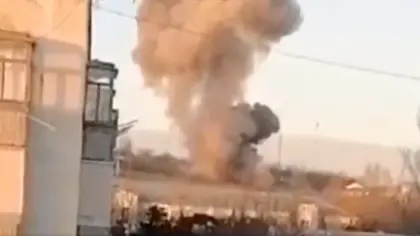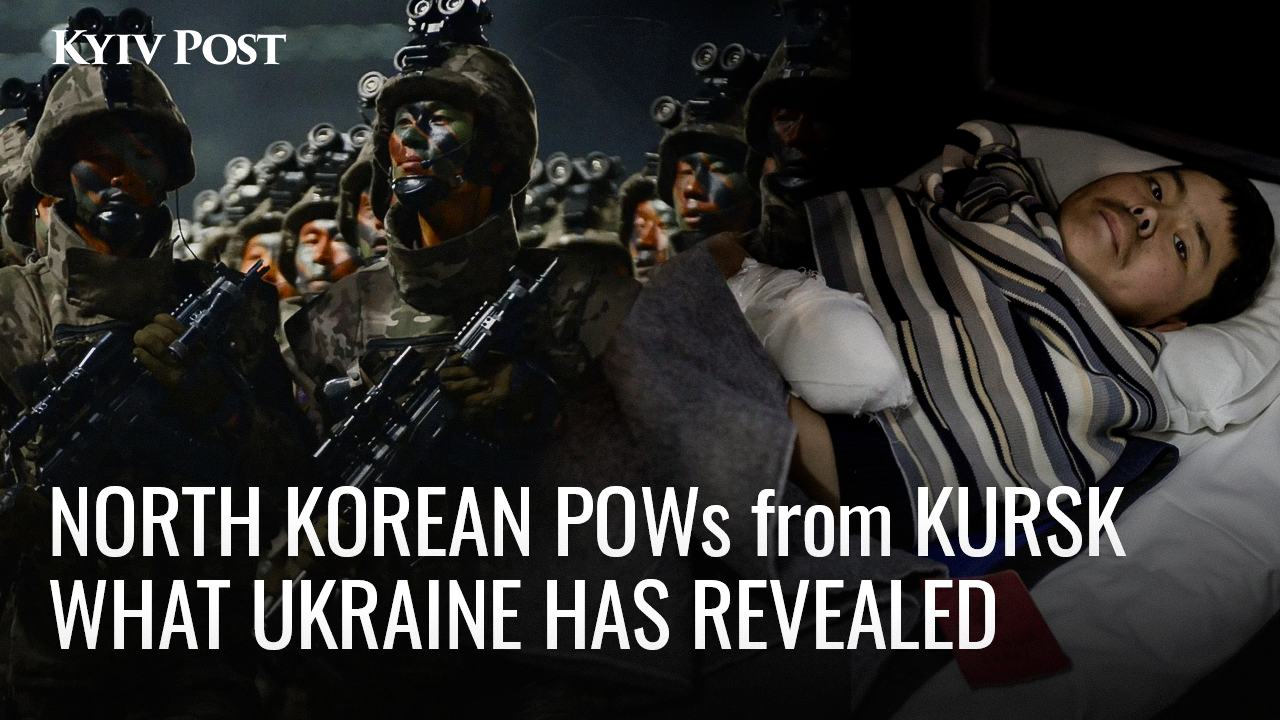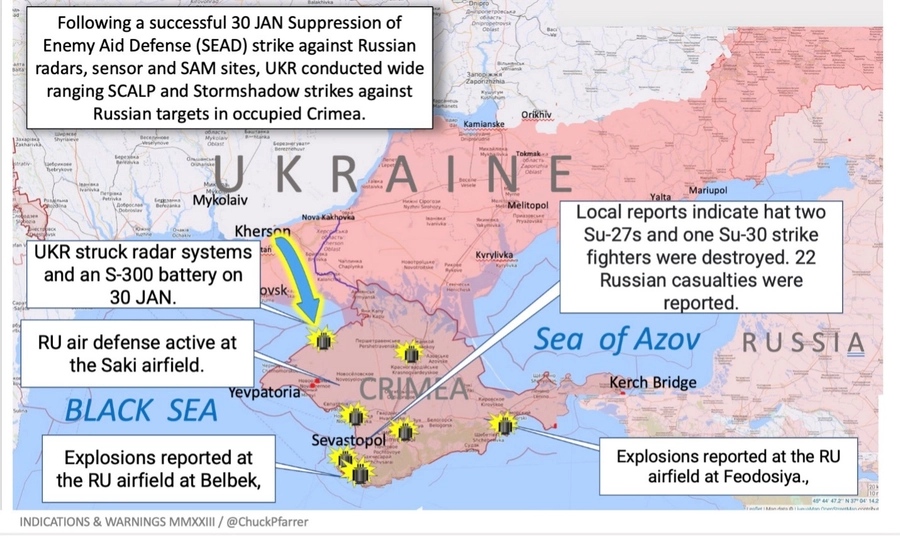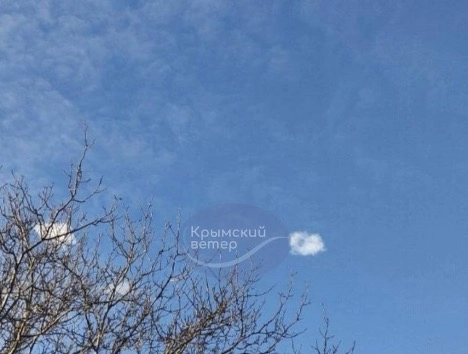An ambitious Ukrainian bomber raid firing British-French cruise missiles broke through Kremlin air defenses and hammered a major military airfield in the Russia-occupied Crimea peninsula, official sources and independent media said Thursday.
At least three Ukrainian Sukhoi Su-24 (NATO reporting name: Fencer) attack bombers carried out the main effort of the Wednesday attack, launching a minimum six British Storm Shadow or French SCALP cruise missiles at targets around Belbek air base, near the Crimea city of Sevastopol.
JOIN US ON TELEGRAM
Follow our coverage of the war on the @Kyivpost_official.
Belbek is the Russian Federation’s most-developed and best-defended air force base in the Black Sea region.
Russian military social media reported the Ukrainian bombers’ took off from Starokonstantinov airfield in central Ukraine on Thursday afternoon and warned readers a Ukrainian missile strike would likely reach Crimea in about 90 minutes.
Ukraine’s Air Force commander Mykola Oleshchuk in a statement published on major Ukrainian media said the Belbek attack was successful and no aircraft were lost. The main Russian military unit targeted was Russia’s 204th Sevastopol Brigade of Tactical Aviation, he said.
Video reportedly recorded by an on-the-ground observer, and released by the Ukrainian Air Force, showed at least two fires burning at Belbek airfield, and a Russian interceptor missile being launched from the ground. Crimean social media first reported explosions in local air space at around 4 p. m. and the last blasts about 90 minutes later.

Kyiv Charges Generals for Failure to Defend Kharkiv Region During Russia’s 2024 Offensive
Russian official sources initially reported twenty Ukrainian missiles were launched at targets across Crimea, all twenty were shot down, and that there were no casualties or damage. Some images posted by locals showed white contrails and smoke puffs consistent with an anti-aircraft missile hit on a flying object.
Footage of multiple explosions at the Russian-controlled Belbek Airbase in Crimea after a Ukrainian missile strike this afternoon. pic.twitter.com/lBcrM54XlD
— OSINTtechnical (@Osinttechnical) January 31, 2024
The independent OSINTtechnical military information platform said “multiple explosions” hit the Russian air base. Images by the pro-Kyiv war news poster Krymsky Veter showed Russian radar and communications vehicles burning, purportedly, in the vicinity of Belbek airfield.
Burning Russian military equipment at the Belbek airfield near Sevastopol, Crimea, as a result of yesterdays Ukrainian missile strike. https://t.co/7ZjOPz1MGQ https://t.co/2klPvO2luD pic.twitter.com/SwiLY6fMce
— Special Kherson Cat 🐈🇺🇦 (@bayraktar_1love) February 1, 2024
The independent Russian news platform Astra reported, citing sources inside the Russian military, that a Belbek-based military communications unit based at the airfield was hit by at least one of the Ukrainian weapons, and its compound set on fire.
An unconfirmed report widely repeated in both Russian and Ukrainian media said Ukrainian forces launched 24 missiles of which 5 penetrated Russian air defenses. Missiles striking Belbek airfield destroyed two Su-27 fighter jets, one late model Su-30 fighter jet, killed 12 service personnel and wounded another 10 soldiers, that report said.
The pro-Kremlin Rybar-Z military information platform said the Ukrainian strike mixed Su-24 bombers launching from Starokonstantinivka airfield with Su-27 and MiG-29 fighter jets taking off from Kanatovo airfield. Some Ukrainian fighters launched US-made HARM anti-radar missiles at Russian air defense radars prior to the bombers’ launch of cruise missiles at Crimean ground targets.
The Ukrainian bombers launched cruise missiles in two waves from deep inside Ukrainian air space near the village Bashtanka. Weapons targeted primarily at Belbek airfield but also aimed at a Russian special forces base at Hvardiiske, the detailed but unconfirmed Rybar-Z report said. The advertised range of HARM missiles provided by the US to Ukraine is 150 km., almost exactly the straight-line distance from Bashtanka to Belbek.
If the report details were confirmed the Ukrainian air force Thursday strike would by aircraft count have been one of the most substantial Ukrainian air strikes of the war, with at least six and likely between 10 and 15 aircraft launching HARM or Storm Shadow missiles, along with additional fighter jets probably flying escort. The HARM missile launches to take down Russian air defense radars were fired at near maximum range, the report said.
Natalya Humenyuk, spokesperson for Ukraine’s joint forces south command, in Feb. 1 comments published the UNIAN news agency said Russian reports “have confirmed” five missiles hit the airfield and that Russian military aircraft were damaged.
Ukrainian military analyst Denys Davydov said open-source images confirm the Ukrainian strike on Belbek airfield hit, at minimum, in the vicinity of ammunition storage bunkers and air defense radars on the south end of the base.
Update from Ukraine _ Ruzzian Main Airfield in Crimea was Hit by Ukrainian Missiles _ Awesome day! pic.twitter.com/9NiCh2g9Oj
— Denys Davydov Update (@DenysDavydovUSA) January 31, 2024
A separate missile flight, possibly two weapons, hit a Russian special force training camp near the Crimea village of Hvardiivske, killing 9 and wounding 7 elite commandoes stationed at the base, that report said.
Subsequent official Russian comment on the strikes shifted the narrative from all-missiles-shot-down-in-the-air to two Ukrainian weapons’ managing to hit the ground, but according to those Moscow-approved accounts both struck a scrap metal junkyard inflicting no casualties and causing no military damage.
Explosions taking place near three other Crimea localities, according to Davydov, were most likely the result of Russian air defenses based around the cities knocking down Ukrainian drones. The loss of the robot aircraft or missiles, he said, was most likely part of a Kyiv plan to distract the attention of Russian air defense units away from air space above the city Sevastopol and the adjacent Belbek airfield, he said.
Official Ukrainian accounts confirmed only the attack against Belbek airfield and offered limited details on damage. Ukrainian Air Force spokesperson Yuriy Ihnat said Russian equipment and air base infrastructure had been destroyed or damaged putting it out of action, and that Russian military personnel had been hit. Ukrainian military intelligence was still reviewing after-battle reports and the extent of destruction caused at Belbek was not yet clear, he said in comments to Radio Svoboda.
“Methodically, regularly, to conduct strikes, to reduce their (Russian) military capacity, we can do that now. We have the means to do that,” Ihnat said.
Acccording to Rybar-Z and other pro-Russia information platforms, NATO surveillance aircraft operating in the western Black Sea monitored flight operations before and during the strike, with an Italian G-550 circling for hours over the Black Sea between the Romanian and Crimean coast on Wednesday, as many as five NATO-operated aircraft in the same air space on Thursday, during the actual Ukrainian strike.
Presence of a NATO reconnaissance aircraft in international air space west of Crimea the next day, prior to the launch of Ukrainian bombers.
A US Navy P-8A Poseidon spy plane was operating in air space along Romania’s south-east Black Sea coast on Friday, some 200 km from Russia-occupied Crimea, the independent air traffic information FlightRadar reported.
Map of Ukrainian missile strikes against Russian targets in the Crimea peninsula, on Jan 30-31. Graphic: US military analyst Chuck Pfarrer.
Photograph reportedly of a Russian anti-aircraft missile intercept of incoming Ukrainian weapons in air space above Hvardiivske base, a Crimea region training site used by Russian special forces. Source: Krymsky Veter Telegram news channel.
You can also highlight the text and press Ctrl + Enter















